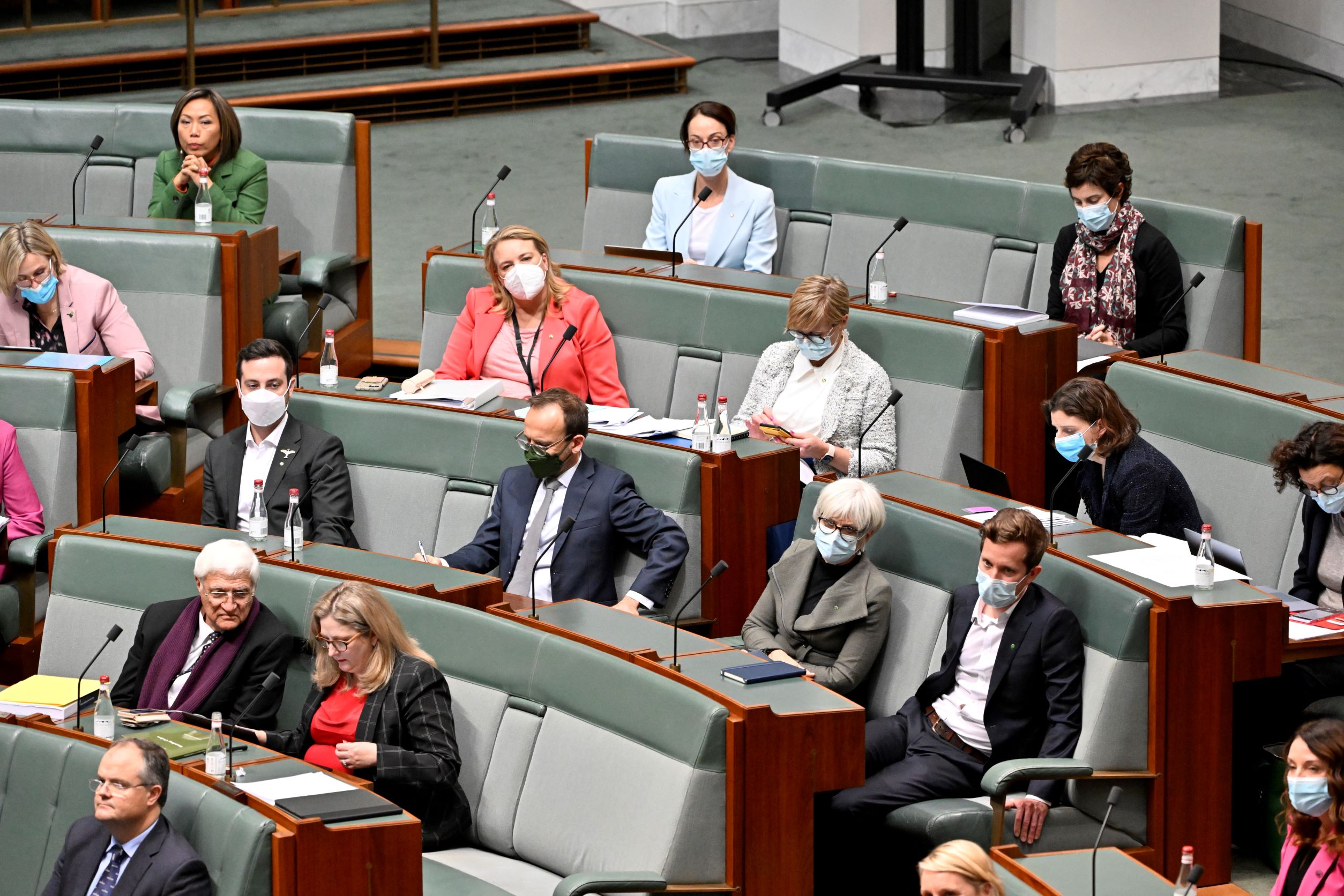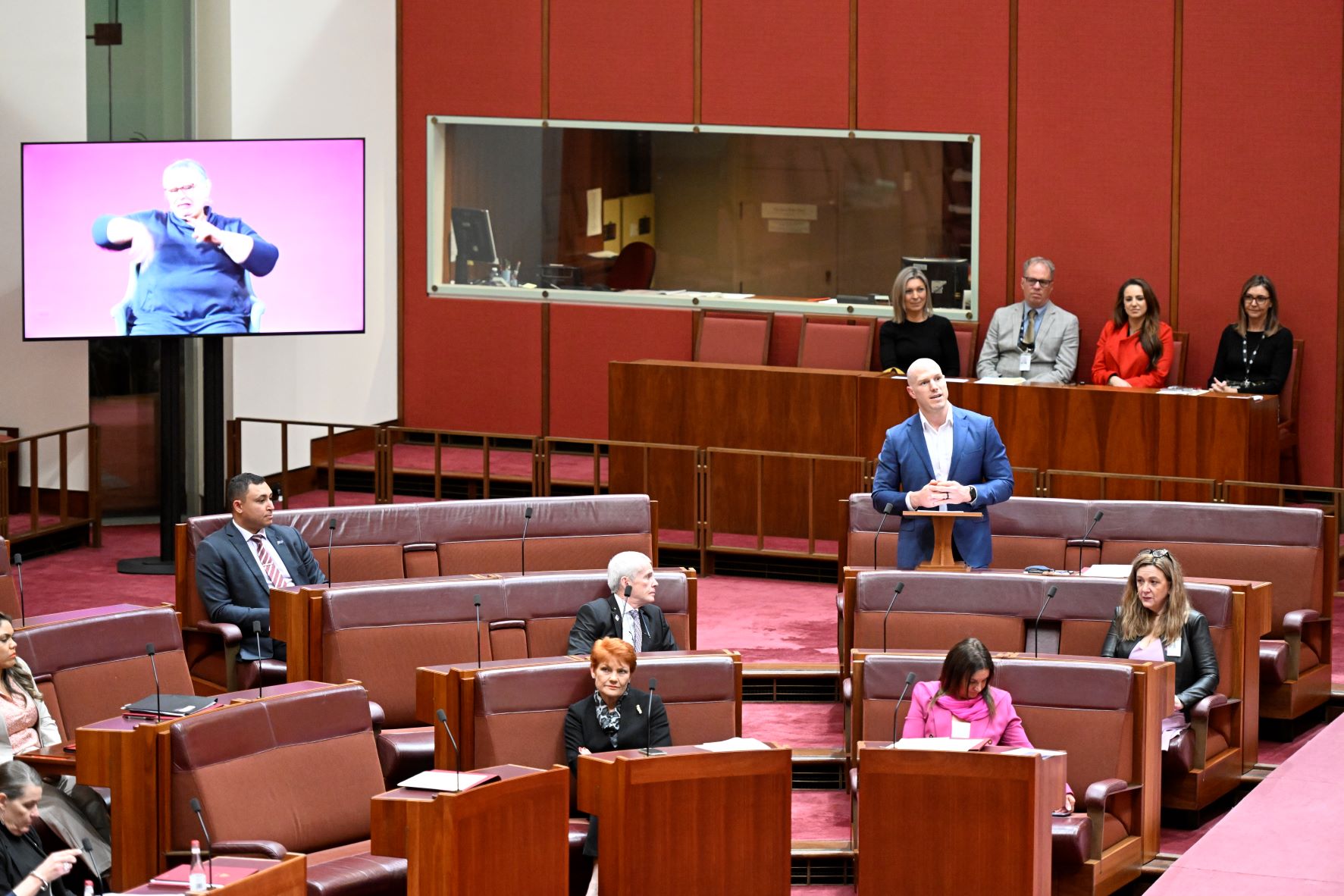Minor parties
Learn about the role of minor parties in the Australian Parliament with this fact sheet. Find out how minor parties can hold the balance of power and influence a hung parliament.
What will I learn?
- A minor party is a party with members elected to the Australian Parliament, but not in enough numbers to form government or opposition.
- Minor party members sit on the crossbench.
- Minor parties may hold the balance of power.
Curriculum alignment
Year 8 AC9HC8K02
Year 9 ACHCK075
What is a minor party?
Independent and minor party members working in the House of Representatives

DPS Auspic
Description
Independent and minor party members speaking to each other, listening, reading or working on their devices in the House of Representatives.
Copyright information
Permission should be sought from DPS AUSPIC for third-party or commercial uses of this image. To contact DPS AUSPIC email: auspic@aph.gov.au or phone: 02 6277 3342.
A minor party might have representatives in only the Senate or the House of Representatives or both. Although a minor party may have only one member in the Australian Parliament, they are not an independent.
Role of minority parties
Minor parties aim to have members elected to Parliament so they can have a greater say on the way Australia is run. Minor parties, along with the opposition and independent members of parliament, have an important role in keeping the government accountable. They do this by:
- scrutinising – closely examining – the work of the government
- asking the government to explain its actions, especially during Question Time
- proposing and debating bills – proposed laws – in the Parliament
- working on committees to examine bills and important national issues
- providing alternatives to government policies.
The crossbench
Minor parties and independents in the Senate.

Graham Tidy/DPS Auspic
Description
Minor parties and independents in the Senate.
Copyright information
Permission should be sought from DPS AUSPIC for third-party or commercial uses of this image. To contact DPS AUSPIC email: auspic@aph.gov.au or phone: 02 6277 3342.
Minor parties and independents in the Senate.

Graham Tidy/DPS Auspic
Description
Minor parties and independents in the Senate.
Copyright information
Permission should be sought from DPS AUSPIC for third-party or commercial uses of this image. To contact DPS AUSPIC email: auspic@aph.gov.au or phone: 02 6277 3342.
Members of minor parties sit on the seats that curve around at the end of the Senate or the House of Representatives between the government and opposition. Independent members also sit here. This area is called the crossbench. The term ‘crossbench’ is also used to describe the group of representatives who sit there.
Balance of power
The government often does not have a majority in the Senate. Minor party and independent senators can have the balance of power – their vote can decide if a bill is passed or fails.
In a hung parliament, where no party or coalition of parties has more than half of the seats in the House of Representatives, government can still be formed. Minor party and/or independent members can give support to a party or coalition to form government. They do not join the government; they agree to support the government’s budget and support it in a no confidence vote. This is called a minority government.